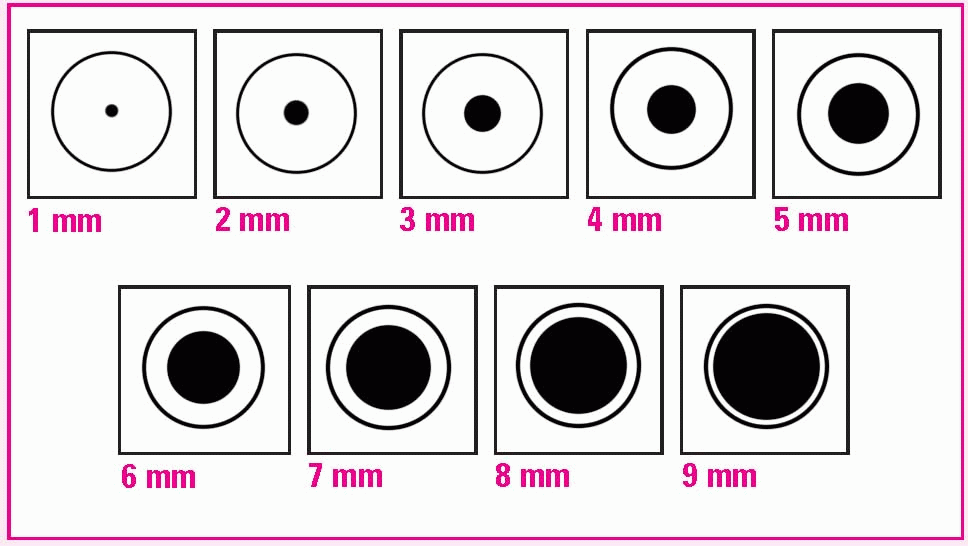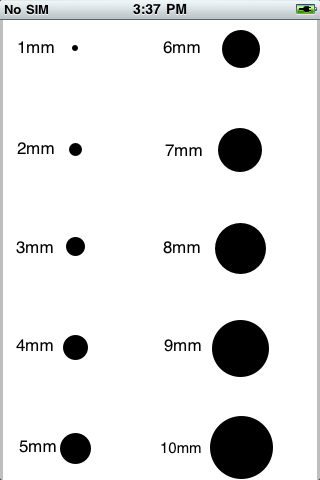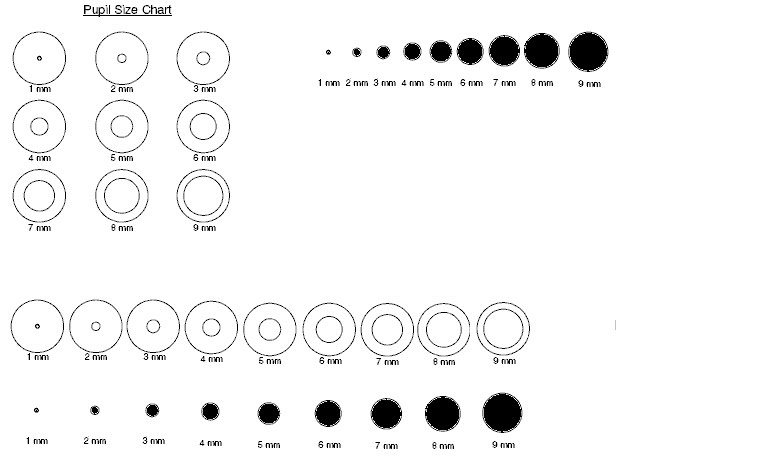In today’s post, we want to talk about an interesting topic that revolves around pupil size. The size of our pupils can tell us a lot about our health, emotions, and even the amount of light in the environment. It’s fascinating how our bodies have these incredible mechanisms that allow us to adapt and respond to different situations.
Pupil Size Chart - What Does It Mean?
 The first image we have here is a pupil size chart. This chart helps us understand the different sizes that our pupils can have and what they indicate. You might wonder why pupil size is essential. Well, it can tell us a lot about a person’s overall health, especially when it comes to the nervous system.
The first image we have here is a pupil size chart. This chart helps us understand the different sizes that our pupils can have and what they indicate. You might wonder why pupil size is essential. Well, it can tell us a lot about a person’s overall health, especially when it comes to the nervous system.
Understanding Pupillary Response
 The second image provides us with more insights into the science behind pupil size. The pupillary response, which refers to changes in the size of the pupils, is influenced by the autonomic nervous system. This system controls our involuntary body functions, including pupil dilation and constriction.
The second image provides us with more insights into the science behind pupil size. The pupillary response, which refers to changes in the size of the pupils, is influenced by the autonomic nervous system. This system controls our involuntary body functions, including pupil dilation and constriction.
It’s interesting to note that our pupils can change size based on external stimuli or internal emotions. For example, in low light conditions, the pupils dilate to allow more light in and improve vision. On the other hand, in bright light, the pupils constrict to protect the delicate structures of the eye.
Pupil Size and Health Conditions
 Did you know that changes in pupil size can sometimes be an indication of certain health conditions? In some cases, it can serve as an early warning sign. For instance, in neurological conditions like brain tumors or concussions, a doctor may examine the size of the pupils to assess the severity of the condition.
Did you know that changes in pupil size can sometimes be an indication of certain health conditions? In some cases, it can serve as an early warning sign. For instance, in neurological conditions like brain tumors or concussions, a doctor may examine the size of the pupils to assess the severity of the condition.
Additionally, drugs and medications can also affect pupil size. Some drugs cause the pupils to dilate, while others may lead to constriction. For healthcare professionals, monitoring changes in pupil size can be important in determining the effects of medication or identifying potential drug abuse.
Using Pupil Size Chart in Practice
 The fourth image displays a printable pupil size chart that can be useful for medical professionals. This chart helps visualize the different pupil sizes and their corresponding measurements in millimeters. It serves as a handy reference tool that can be used in clinical practice.
The fourth image displays a printable pupil size chart that can be useful for medical professionals. This chart helps visualize the different pupil sizes and their corresponding measurements in millimeters. It serves as a handy reference tool that can be used in clinical practice.
Along with the chart, it’s also important for healthcare professionals to assess other factors that can contribute to changes in pupil size. Factors such as the lighting conditions, any recent eye trauma, or the use of medication should be taken into consideration for a comprehensive analysis.
Interpreting Pupil Size
 The fifth image showcases another version of a pupil size chart. It is always important to remember that interpreting pupil size is not a straightforward process. It requires proper assessment and consideration of individual differences.
The fifth image showcases another version of a pupil size chart. It is always important to remember that interpreting pupil size is not a straightforward process. It requires proper assessment and consideration of individual differences.
It’s worth noting that pupil size can also be affected by emotions. For example, excitement or fear can cause temporary dilation of the pupils. Similarly, certain medications may lead to unusual pupil reactions, which should be taken into account during the assessment.
Importance of Pupil Size in Nursing
.jpg) The sixth image provides us with a pupil scale in millimeters specifically geared towards nursing professionals. This scale allows nurses to measure and document the size of pupils accurately, aiding in patient assessments and the overall care provided.
The sixth image provides us with a pupil scale in millimeters specifically geared towards nursing professionals. This scale allows nurses to measure and document the size of pupils accurately, aiding in patient assessments and the overall care provided.
Nurses play a crucial role in monitoring and identifying any changes in patients’ pupillary response. They collaborate with other healthcare providers to evaluate pupil size in relation to the patient’s medical history, symptoms, and overall condition.
Final Thoughts
 Pupil size can provide valuable insights into a person’s health and well-being. By understanding how pupil size is influenced by various factors, healthcare professionals can use it as a diagnostic tool, allowing for early intervention or further investigations.
Pupil size can provide valuable insights into a person’s health and well-being. By understanding how pupil size is influenced by various factors, healthcare professionals can use it as a diagnostic tool, allowing for early intervention or further investigations.
We hope that this post has shed light on the significance of pupil size. Whether you’re a healthcare professional or simply interested in learning more about the human body, exploring topics like these can be incredibly fascinating. Remember, our bodies are full of wonders, and the way our pupils respond is just one remarkable aspect.
 Refer to the seventh image shown above for a printable pupil size chart that you can utilize for your reference. Having access to such visual aids can be helpful, especially if you encounter any scenarios where assessing pupil size becomes essential.
Refer to the seventh image shown above for a printable pupil size chart that you can utilize for your reference. Having access to such visual aids can be helpful, especially if you encounter any scenarios where assessing pupil size becomes essential.
In conclusion, pupil size is not just a random aspect of our anatomy. It holds valuable insights into our overall health, and healthcare professionals can utilize this information for diagnosis, monitoring, and providing appropriate care. So, the next time you look into the mirror, take a peek at your pupils and appreciate the wonders that lie within you.